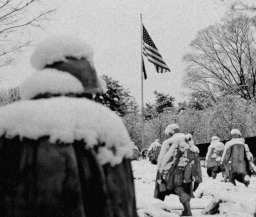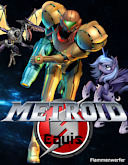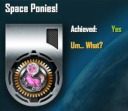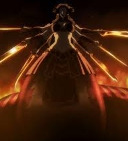
Chapter 1
Reader’s Digest - October 1999
Hidden in the rolling plains of Nebraska lies a silent testament to America’s forgotten war.
By Matthew Orlowe
Fairbury is like a lot of old towns in the heartland. The railroad that once made it rich has moved on, leaving only rusting tracks and old memories in its wake. Its population, which peaked at 7,000, has shrunk to less than half as many. But the people here are a hardy sort, and if anything, their pride in Fairbury has only increased. In recent years, they've tried to reinvent themselves as a tourist destination - the old Grange hall has been converted into a local history museum, the main street has been cleaned up, and there is even talk of reopening the old Great Northern repair yards as a railroad museum. Unlike so many towns, it seems to be working - jobs still leave town, but not so quickly as before. There’s a sense of hope in the future, lacking in so many other Nebraska burgs that seem left behind by the interstate.
But if you rifle through the tourist pamphlets printed by the town’s Chamber of Commerce, the absence of something might stand out. It has been a source of local rumors and ghost stories for decades, and visiting it late at night has become something of a rite of passage for a generation of children from the county middle school. And yet apparently the Boneyard warrants not so much as a single line.
There are no signs to direct you to it - if there once were, they have been long since stolen. I’d been there before the previous year, but even so, I quickly became lost on the one lane county roads that wound their way through the rolling hills outside of town, and if not for directions from an understanding farmer, I doubt I would have ever made it. But eighty minutes after leaving Fairbury, I drove through the front gates of the Boneyard.
Officially, it is named the William De Forest Taphonomy Research Center, but few people, even the ones working there, call it by that title. Here, a stone army stands an eternal vigil in precise rows, a macabre memorial to a war most Americans have forgotten. They were the first victims of the Korean War, and in some way, also the last. For the dead now rest, and time has slowly healed the wounds of the living. But for these men, frozen where they stood, the war still rages on.
I met Dr. Kevin Komoto in the parking lot - I had only held a brief conversation with Komoto on my prior visit, and was glad to have a better chance to speak with him. A tall, stocky man with a somewhat unruly mop of grey hair, Komoto has been the director of the Boneyard for the past fifteen years, and while some people would consider an extended assignment here to be the bureaucratic equivalent of a posting to Siberia, he says that he wouldn't take any other position in the world. The doctor has spent much of his professional life studying petrification, or taphonomy as it is scientifically known, and is now one of the globe's leading experts on the matter. In an obscure field, such words have little meaning, and he laughed off my attempts to compare him with such medical pioneers as Cushing and Hewmore as we walked inside the center. Half-pulling me through a veritable maze of offices and unoccupied labs, we soon passed the Streit Memorial Library.
It was the library that had first brought me here while doing research for my next book. In the aftermath of World War Two, Dr. Albert Streit was a researcher attached to US forces investigating the infamous Ōra Compound and Unit 452. His translated collection of Japanese documents would become the primary source of information on the Imperial Army's exos-weapons program. The dangerous nature of wildlife on the other side of the Apertūra had been apparent from the earliest attempts to explore past the barrier. Opening up on what is now known as the Everfree Forest, the deaths and injuries received by Man in his first steps onto another world attested to the deadly nature of the wild species that lay beyond. However, it was the Japanese that first recognized the potential for military applications - during the late 1920s, researchers under the command of a Colonel Ishiro would collect numerous living specimens, smuggling them aboard cargo trains running through the Apertūra between Equestria and the United States. Breeding populations were quickly established in Manchuria. Unit 452, which oversaw these efforts, would pursue numerous tracks of research. Some would be employed during the war with great effect - Purified Poison-Joke, dropped from bombers, would break the back of the great 1939 Chinese offensive. Others, such as trained Cockatrice strains, were not completed before Imperial Japan's defeat. The bulk of this research would fall into the hands of the Soviet Union when its troops invaded and occupied Manchuria - in a scant five years, they would apply this new-found knowledge with brutal efficiency in the Korean War. Streit's collection was moved to the De Forest Center shortly after it opened. While the musty files and binders that reside within the library have changed little in the intervening decades, the same cannot be said of the structures around it.
The center is a small complex of pre-fabricated steel buildings painted in a faded white - the older brick edifices that once stood here were torn down twelve years ago and never truly replaced. I could hear the autumn wind pounding against the thin sheet-metal that made up the walls, and Komoto briefly bemoaned a lack of insulation. “The propane furnace just can’t handle the cold. By the time December rolls around, we have to hook up so many electric heaters that the county fire-marshal would have a heart attack if she came in here.” Much like Fairbury, the Boneyard’s glory days are far behind it - opened with great public acclaim in 1954, this center was a symbol of the lengths the government was going through to treat our fighting men that had become “locked” in the war - there was even talk of finding a cure within five years. But five years turned to ten, then thirty, and still no solution was in sight. The impressive brick warehouses and laboratories were ravaged by a fire set by arsonists in 1987, and condemned. There was little in the way of funds to replace them - the center’s staff had been shrinking steadily for years, as had its operating budget. As the two of us walked through offices and workshops, Komoto said that he was glad that the Boneyard received as much as it had to rebuild.
“It was a tense couple of months there - for a time, we were worried that the Army or Congress might shut us down entirely, roll the project into some other agency that wouldn't consider it a priority and halt work altogether. But I still had some friends in the right places and we pulled through.” Pulled through it might have, but the center had to become used to trying to do more with less, and finding new ways to justify funding. They had branched out into other areas of research - “Emergency petrification, that’s one way to try and justify our existence to the Quadrangle,” Komoto explained. The methods used by the Soviet-trained North Koreans to petrify flesh were crude - other manners being investigated at the center held far more potential for reversal, particularly if the Cockatrice’s head remained available to physicians. Perhaps petrification could be used to freeze a badly wounded soldier who would otherwise die before making it to a field hospital. Someone who has been petrified would have no sensation of time passing while frozen - I had been informed of that on my first visit. Few individuals who encountered a Cockatrice have been resuscitated, but one of Komoto’s scientific contacts in the Equestrian Commonwealth had been revived due to a hasty intervention from a friend. Her account was, in large part, the basis of the Yard’s new focus of research.
But such a scenario is still far in the future and considering the center’s ambitious but often failed predictions, it’s doubtful that any generals will be pushing for battlefield taphonomy before Congress. The sights that await you behind the center are, by themselves, enough to see to it. And that was where we were heading next.
Once you exit through the rear doors of the center, one quickly realizes how the name “boneyard” came into being. The long lines of frozen soldiers reaching off into the distance have an immediate impact - a chill enters your chest, one that won’t recede until hours after you have left. These grey figures serve as a visceral reminder of a war that for most people has faded into the history books. Wild eyes, searching for an unseen enemy, a gloved hand thrust up towards the sky, a silent plea for help. Each figure you walk by seems to draw you in, forces you to imagine what their story might have been. Komoto ignored all this - he had become used to such things, and quickly strode ahead, leadingg me along cracked concrete pavers lined with dead brush. The center has little money to spend on landscaping, and while the local American Legion hall does its best to keep the yard maintained, this far from Memorial Day there is little evidence of their work aside from a wreath laid at the base of a flagpole.
“This is the memorial gallery. These are the men we've identified in some way - a visible dog-tag, names stitched into uniforms, a comrade recognizing their face.” He stooped down, pulling up a metal tag tied around one soldier’s arm with nylon cord. “Anthony M. Dunlop. Private First Class, from Indiana. Declared missing-in-action, October 1952. His body was found by a Korean construction company in 1965. We saw this a lot in the early years - petrified soldiers getting buried by shellfire." As Komoto fitted the plate back on, I started to examine other men more closely. Each had a tag - most were made of stamped metal, badly corroded by the weather. A few had partially melted in the fire, and were barely legible.
We moved on, past the memorial section. The next area was blocked by a gate, which Komoto unlocked. The difference was stark. I had thought the last section to be poorly maintained, but here, overgrown walkways gave way to a morass of mud and gravel. Men’s bodies, frozen in various positions, lay about on moldering wooden pallets.
“These are the ghosts. Petrification cases where we could never establish identification. Perhaps their faces were covered, and there were no marks we could use as a lead. Nobody recognized them, even tentatively. Some of them might be Koreans. We’ve shipped back quite a few over the years to the taphonomy institute in Pusan that we decided were actually Korean nationals. There was even one Pegasus, from the Equestrian Expeditionary Force - he'd been too bundled up in blankets to recognize the species.”
As I gazed across the rough lines of figures, I wasn't sure if the lack of visible faces made it easier to look upon them.
We continued deeper into this jungle of petrified limbs. Up ahead, a work gang was hoisting a pallet into the back of a truck. My companion took one look and sighed. “That’s one of the unfortunates. It’s what we call them - not everyone was in good health when they were petrified. Some had been mortally wounded… they’re the ones we use for potentially destructive testing.” Komoto went on. As their options had dwindled, more radical tests had to be conducted. And hard data was needed on the long-term durability of petrified individuals. “It’s not stone, not in the conventional sense. If it was, you'd have seen pitting on them by now from acid rain, due to being stored outside, year round. And the material is anything but brittle - simple mishandling won’t cause a fracture, as it would with a statue carved from stone. The only way we were able to find out things like that was through destructive testing. It’s very hard to do, but also necessary. We only perform tests like that on individuals where it is clear that even unpetrified, they wouldn't survive more than a few minutes, if that, due to the state of their injuries.”
The two of us left the workers behind, and soon started to come across even stranger figures - entire scenes frozen in time. Unfortunate Korean pack-animals with heavy burdens roped to their backs stilled mid-stride, a flock of crows picking apart what looked to be a dead ox. Most unusual of all was a small creature that had been set off by itself.
The Cockatrice is a strange beast, even by the standards of wildlife on the far side of the Apertūra. It has a long, sinuous body that can reach up to six feet in length. Fine green scales are interrupted only by bat-like wings and a short pair of legs that seem to be little more than an afterthought. Atop it all sits the head of a wild rooster, at the end of a slender neck. This particular specimen had been petrified early in the war, due to the quick actions of a 7th Infantry Division nurse who used a mirror to redirect its fearsome gaze back at it. Throughout the conflict soldiers would try and come up with countermeasures to this terrifying Korean super-weapon. Mirrored glasses with baffles that slowed down the speed with which the cockatrice's petrification worked - distant marksmen that watched over advancing men from outside the range of hypnotic glares. Most of these efforts failed, or were of only marginal use. Of the handful of frozen cockatrices seized during the war only this one, Specimen-21P, still exists - all others were destroyed. Even in this paralyzed state, the creature still holds a certain power and I found myself drawn into its stone eyes. A tap from Komoto seemed to break the spell, but as we walked away, I easily understood why those other examples had been smashed apart.
After this, we finally reached the barbed-wire tipped chain-link fence that marks the boundary of the boneyard. It was taller than the last time I was here - teenagers had broken in over the summer and vandalized several of the petrified bodies with spraypaint. Next year, the boneyard has plans to install a more secure perimeter wall - a wealthy private donor has offered a significant endowment to the center to pay for improvements to the grounds. With so few Korean War veterans remaining in Congress, and more retiring every year, what Komoto called “innovative” funding methods were likely going to become necessary to help pick up the slack.
Sun sinking low in the grey sky, I said my farewells to Dr. Komoto, and headed back to Fairbury. The Boneyard has become a minor source of contention in recent years, at least for the few aware of its existence. Some say that it is a grotesque display of the dead, and that families should give up false hope of being reunited with their loved ones. Others argue that these men, trapped in limbo, deserve all the energy and labor at our disposal. But as the decades pass, even this debate will fade away. The war has been over for 46 years - the America these men once knew has disappeared. Lovers moved on, and made new lives for themselves. Parents have passed away, brothers and sisters grown old. Pictures in family photo albums have faded, boxed away in a forgotten attic. Perhaps, some say, it would kinder to leave them be, rather than take away all they had ever known.
Old wounds take a long time to heal. And not knowing the fate of a loved one can be the worst wound of all. I have no memories of my father - he was deployed to Korea before I was even born, and declared missing-in-action by my first birthday. Did he die there, alone in a frozen Korean forest, body undiscovered? Or is he somewhere behind me, one of the “ghosts”, another unknown figure still fighting a war long over. I’d like to think David would be proud of me, of the life I made for myself, and of his three beautiful granddaughters. Perhaps, someday in the future, he can tell me himself.
Matthew Orlowe is a history and science contributor to the Mid-Atlantic Weekly and Omni Magazine. His upcoming book Tears of Henan investigates the terrible scars that China still bears from Purified Poison-Joke, and the discrimination that the Gǎndòng (Touched) and their children face.









Wow. This is a very unique concept that I have yet to cross. And you pulled it of perfectly. I lift my hat for you good sir, but I do wish there were more. Either way, this was a great read and a greater concept. I hope you may expand upon it some day.
Til' then,
Lore